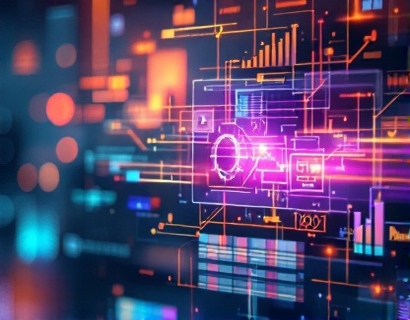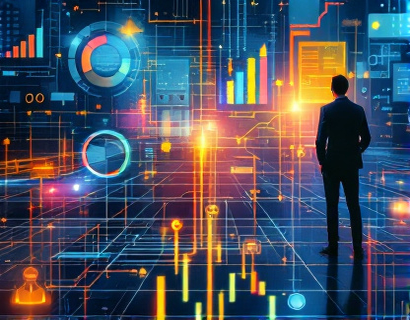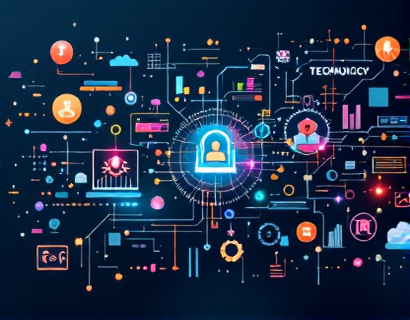Decentralized Verification for Ucosystem Assets: Enhancing Trust and Access through dApp Technology
In the rapidly evolving landscape of digital assets, the need for secure, efficient, and transparent verification methods has become paramount. The Ucosystem, a platform that enables users to manage and utilize a variety of digital assets, has introduced an innovative solution to address these needs. This article delves into the concept of decentralized verification for Ucosystem assets, focusing on how this technology can unlock premium access and enhance user experience through trusted dApp solutions.
Understanding Decentralized Verification
Decentralized verification refers to the process of confirming the authenticity and ownership of digital assets without relying on a central authority. This approach leverages blockchain technology and smart contracts to create a trustless environment where users can verify their asset holdings independently. In the context of the Ucosystem, decentralized verification ensures that users can securely and efficiently prove their ownership of digital assets, thereby gaining access to a range of premium features and benefits.
Benefits of Decentralized Verification
The adoption of decentralized verification in the Ucosystem offers several key advantages. First, it enhances security by eliminating single points of failure and reducing the risk of data breaches. Since verification is distributed across a network of nodes, the likelihood of a single entity manipulating the system is significantly reduced. Second, it improves efficiency by streamlining the verification process, allowing users to quickly and easily confirm their asset holdings. This efficiency translates to a smoother user experience and reduced friction in accessing premium services.
Additionally, decentralized verification promotes transparency and trust within the Ucosystem. Users can independently verify the authenticity of asset holdings, fostering a more trustworthy community. This transparency is crucial for building confidence among users and encouraging broader adoption of the platform.
How Decentralized Verification Works
The process of decentralized verification in the Ucosystem involves several key steps. First, users initiate a verification request through a decentralized application (dApp) integrated with the Ucosystem. This dApp communicates with the blockchain network to access the user's asset data. The verification process is then executed through a series of smart contracts, which are self-enforcing contracts with the terms of the agreement directly written into code.
Smart contracts play a crucial role in ensuring the verification process is both secure and automated. They define the rules and conditions under which verification is performed, such as checking the balance of a specific asset in a user's wallet. Once the conditions are met, the smart contract updates the user's verification status on the blockchain, creating an immutable record of their asset ownership.
The use of decentralized storage solutions, such as InterPlanetary File System (IPFS), further enhances the verification process by storing verification data in a distributed manner. This ensures that verification records are resilient to censorship and tampering, providing a reliable and permanent source of truth for asset ownership.
Enhancing Digital Asset Management
Decentralized verification not only secures the verification process but also significantly enhances digital asset management for Ucosystem users. With verified asset holdings, users can more effectively manage their portfolios, track transactions, and make informed decisions. The transparency provided by decentralized verification allows users to easily monitor their asset values and performance, leading to better investment strategies.
Moreover, the integration of decentralized verification with the Ucosystem's platform enables seamless access to a wide range of premium services. Users with verified asset holdings can unlock exclusive features such as advanced trading tools, personalized insights, and priority customer support. These enhancements not only improve the user experience but also add significant value to the ownership of digital assets within the Ucosystem.
Exclusive Benefits for Verified Users
One of the most compelling aspects of decentralized verification in the Ucosystem is the array of exclusive benefits available to verified users. These benefits are designed to reward users for their active participation and ownership within the platform. For instance, verified users may gain access to special events, webinars, and workshops focused on digital asset management and investment strategies.
Additionally, verified users might enjoy priority access to new features and updates, ensuring they are among the first to benefit from enhancements and innovations. Some platforms may also offer staking or yield farming opportunities exclusively for verified users, allowing them to earn higher returns on their assets. These exclusive benefits not only enhance the user experience but also create a positive feedback loop, encouraging more users to verify their assets and engage more deeply with the Ucosystem.
Technological Foundations: dApps and Blockchain
The success of decentralized verification in the Ucosystem is built on robust technological foundations, primarily blockchain and decentralized applications (dApps). Blockchain technology provides a secure, transparent, and immutable ledger for recording asset ownership and verification status. This ensures that verification records are tamper-proof and accessible to all participants in the network.
dApps, such as the one used for verification, are decentralized applications that run on blockchain networks. They leverage smart contracts to automate and enforce the verification process, ensuring that all actions are transparent and verifiable. The decentralized nature of dApps means that they are not controlled by any single entity, reducing the risk of censorship and manipulation. This aligns perfectly with the principles of the Ucosystem, which emphasizes decentralization and user empowerment.
Challenges and Considerations
While decentralized verification offers numerous advantages, it is not without its challenges. One of the primary concerns is the technical complexity involved in implementing and maintaining a decentralized verification system. Users need to have a basic understanding of blockchain and dApps to fully utilize the verification process. To address this, the Ucosystem can provide educational resources and user-friendly interfaces to make the process accessible to a broader audience.
Another consideration is the scalability of the verification system. As the number of users and assets grows, the network must be able to handle increased traffic and transactions without compromising performance. Implementing efficient consensus mechanisms and optimizing smart contracts can help mitigate these issues, ensuring that the verification process remains fast and reliable.
Future Prospects: Expanding Decentralized Verification
The future of decentralized verification in the Ucosystem looks promising, with several potential expansions and improvements on the horizon. One area of focus is the integration of zero-knowledge proofs, which allow users to prove ownership of assets without revealing sensitive information. This enhances privacy while maintaining the integrity of the verification process.
Additionally, the Ucosystem can explore interoperability with other blockchain platforms, enabling users to verify and manage assets across multiple ecosystems seamlessly. This cross-chain functionality would further enhance the utility and appeal of the verification solution.
Furthermore, the development of more sophisticated dApps that leverage verified asset data for advanced analytics and personalized recommendations can provide users with deeper insights and better decision-making tools. These advancements will not only improve the user experience but also drive greater adoption and engagement within the Ucosystem.
Conclusion
Decentralized verification for Ucosystem assets represents a significant step forward in ensuring security, efficiency, and transparency in digital asset management. By leveraging blockchain and dApp technology, the Ucosystem can provide users with a trusted and reliable way to verify their asset holdings, unlocking a range of premium benefits and enhancing overall user experience. As the technology continues to evolve, the potential for further improvements and expansions is vast, positioning decentralized verification as a cornerstone of the future digital asset ecosystem.










































